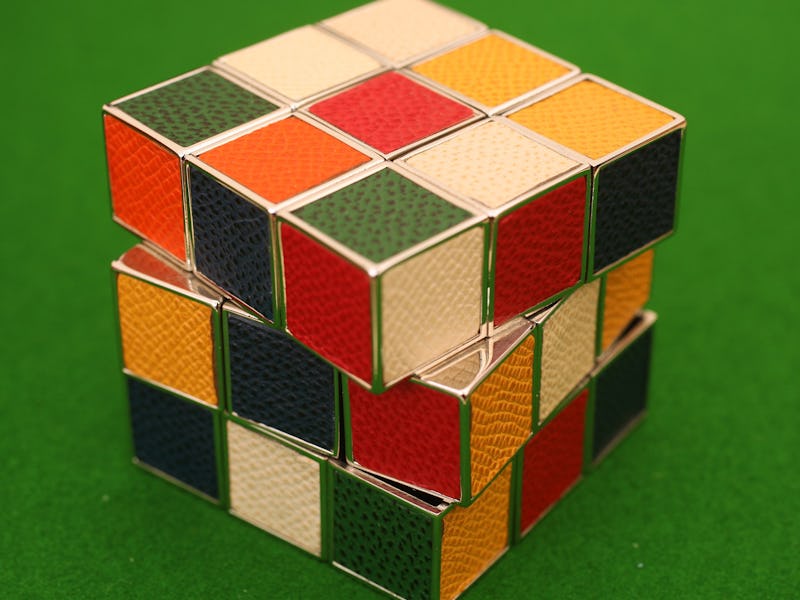How the Rubik's Cube Got Siri and Viv Creator Adam Cheyer Into Programming
Cheyer used to be able to unscramble a Rubik's Cube in an average of 26 seconds -- which was pretty good in his day.

Adam Cheyer’s personal website looks like a page ripped from the Internet Archive Wayback Machine. A puzzle pattern fades into a photograph of Cheyer next to a terse four sentences that include the statement: “Computers are awkward to use, not suited to the way people think.”
Cheyer’s website is more than just a random and novel relic from the mid 2000s. It’s the early website of the man behind Siri and Viv, which aims to be the most advanced form of language-based A.I. when it debuts later this year. Despite its appearance, Cheyer’s website is still updated with the latest news about his speaking arrangements and products. But it also looks back to the past at Cheyer’s first forays into programming. For Cheyer, it all started with a Rubik’s Cube.
“A Rubik’s Cube got me into computers,” Cheyer tells Inverse over email, “with the first full program I ever wrote (in the Basic programming language: if-then, goto, print) being a Rubik’s Cube solver.”
Adam Cheyer
Programmers who grew up before the ubiquity of computers and the internet didn’t have the luxury of user-friendly programming languages and learning platforms. They were programming before programming was the cool thing to do, and being ahead of the curve meant laterally entering the binary world of 1s and 0s. Cheyer and other early adopters were doing the same thing as today’s programmers, though: solving a problem.
“I always found the books on Rubik’s Cubes hard to follow, particularly because of the notation they used to convey turns or moves on the cube,” Cheyer says. “A typical sequence would be like this: R2 L’ U D2 etc. — hard to parse. One of my contributions at the time was a more graphical notation that showed pictures in a pretty concise way.”
Back in 1981, Cheyer could unscramble a Rubik’s Cube in an average of 26 seconds. Today, the moves he used are dated, and faster solutions are more widespread; the current Rubik’s Cube world record, a hair under five seconds, was set last year. That doesn’t dampen the impact creating the graphical notation had on Cheyer, though.
“Since I was proud of this idea, I left it on my website in the hopes that some other aspiring cubist might find the notation useful, if not the actual sequence of moves themselves,” Cheyer says.
Rubik's Cube has had an unbelievable amount of cultural staying power.
Rubik’s Cubes aren’t what they used to be. Sure, the toys still pop up every now and again as a stand-in for genius. Take Will Smith’s character in The Pursuit of Happiness as an example. (Even though that reference is 10 years old now.)
You can’t count on the public school system to inspire the youth masses into learning to program. You can hardly count on the public school system to inspire the youth to do math. Luckily, nerd and computer culture is cool now. If it wasn’t, you wouldn’t be reading this. The people who would have been timing how fast they could solve a Rubik’s Cube are the gamers and internet addicts of today, and gamers and internet addicts are the programmers who will shape the future.
“I think game programs like MineCraft will encourage kids to move from being just a player to eventually being able to program, add plugins, and create their own worlds,” Cheyer says.
If those worlds are anything like the world that Cheyer is helping build with Viv, the future looks smart.